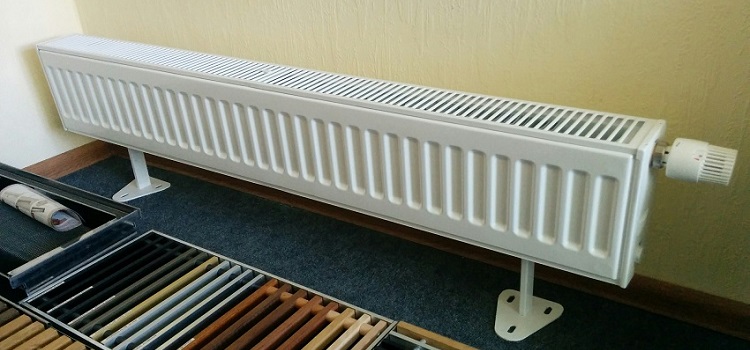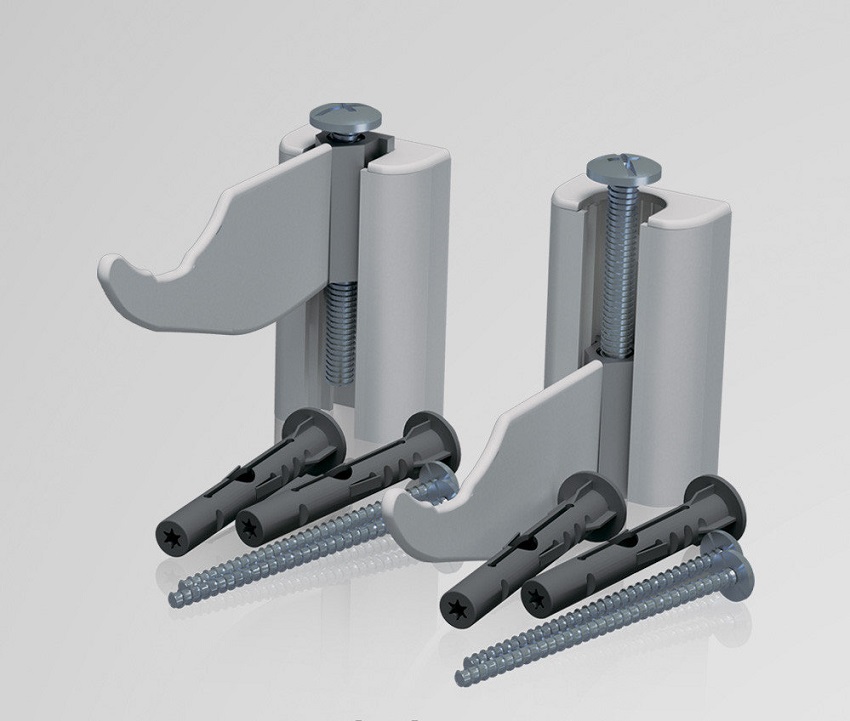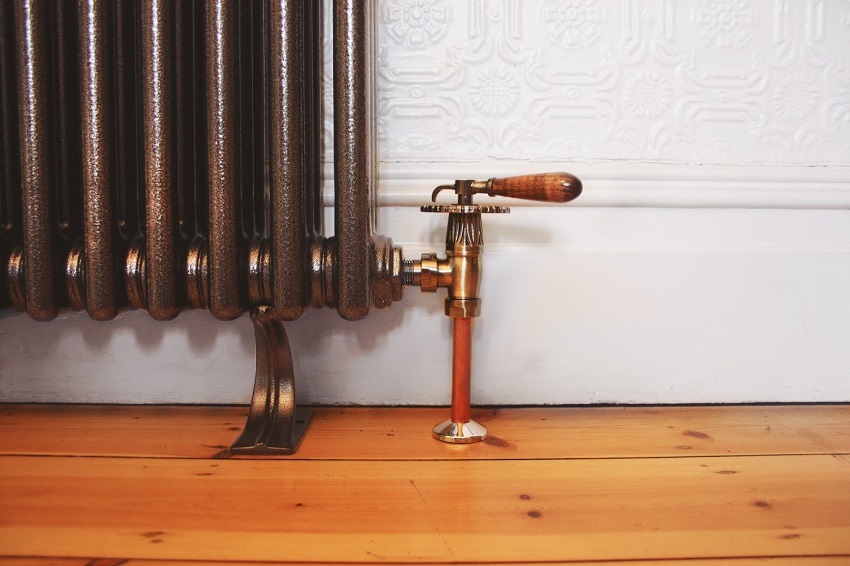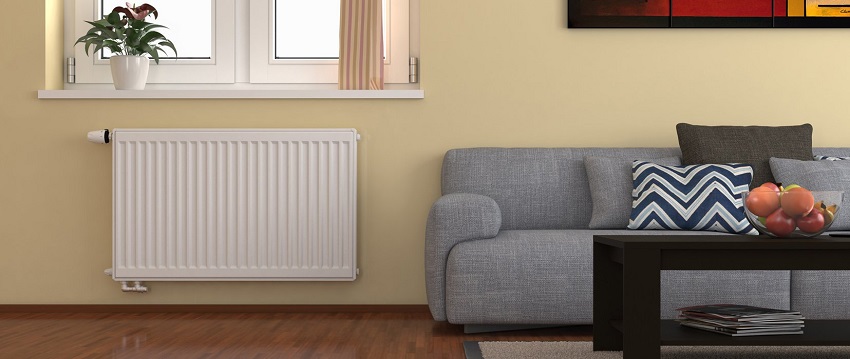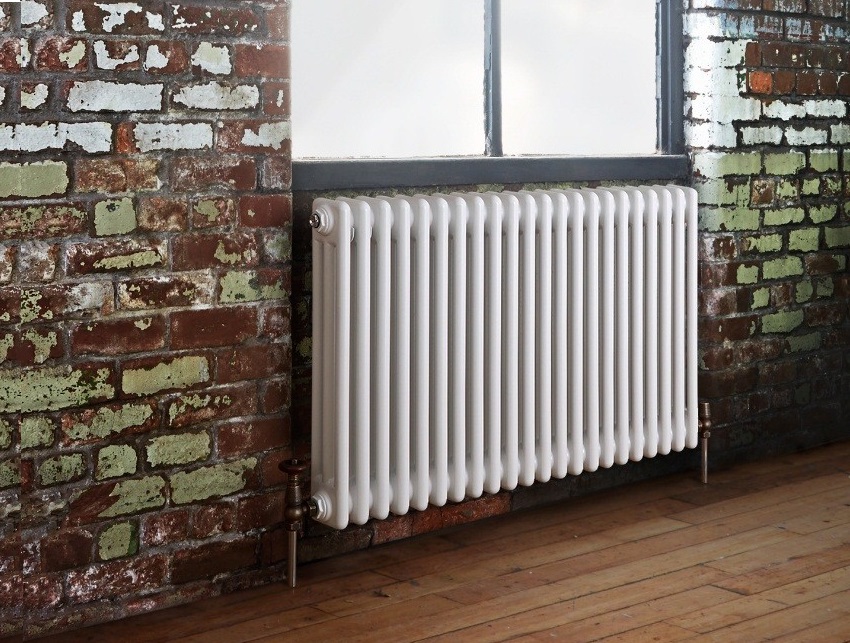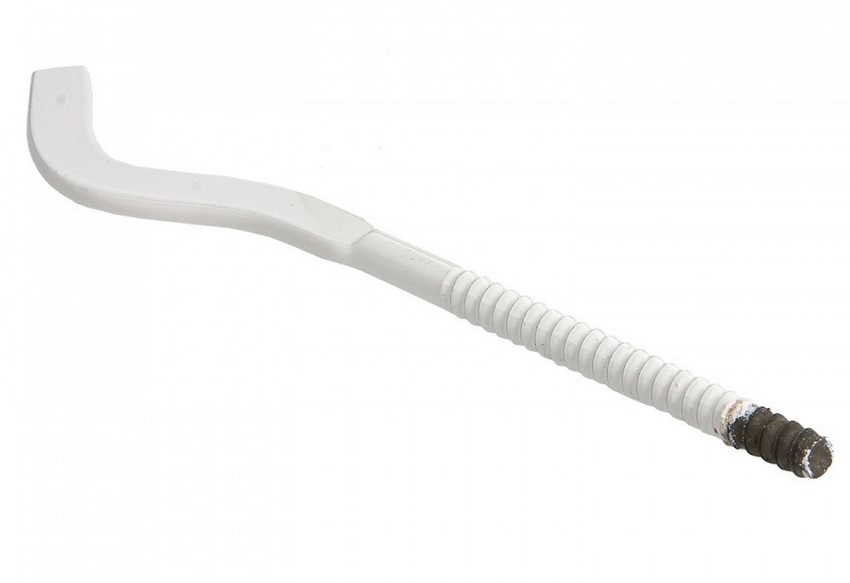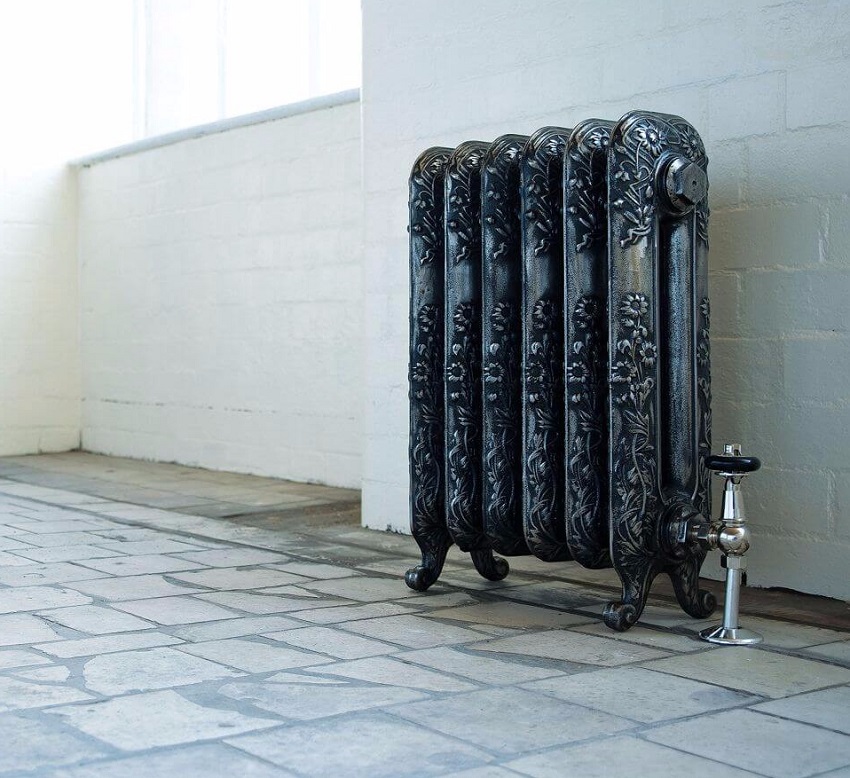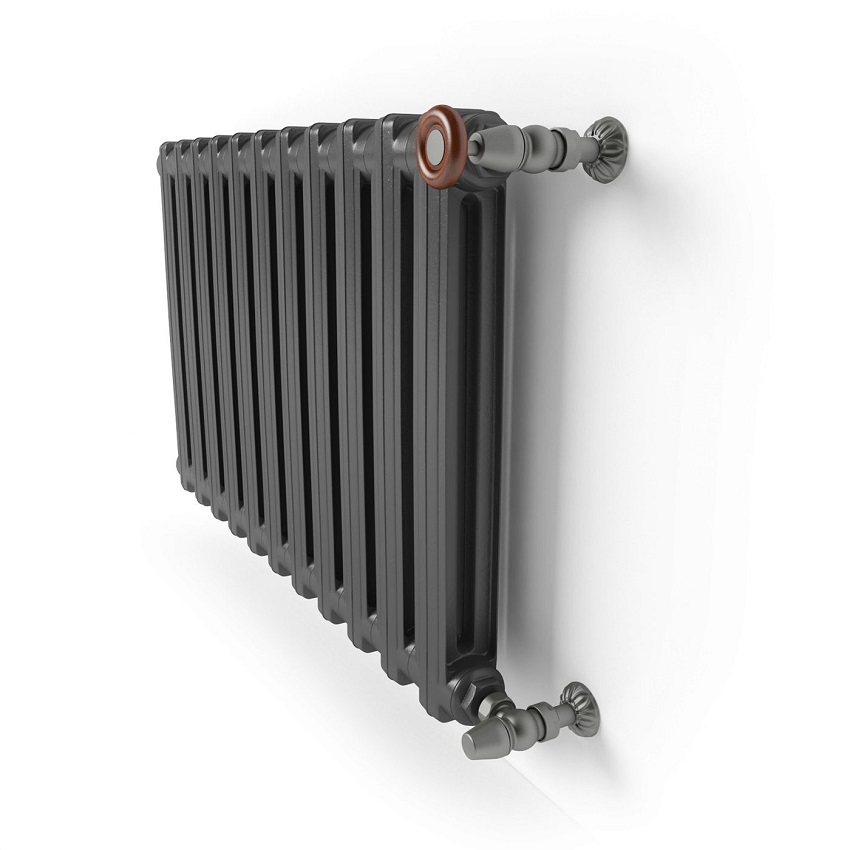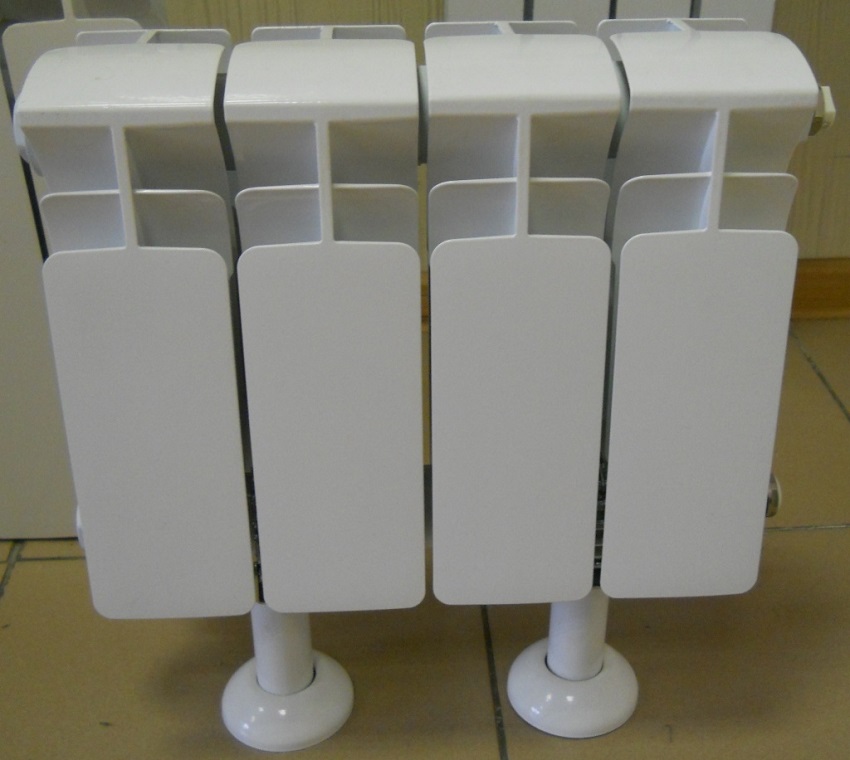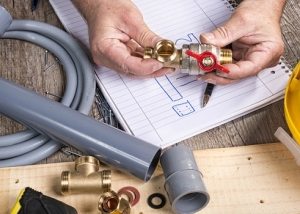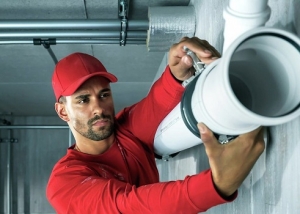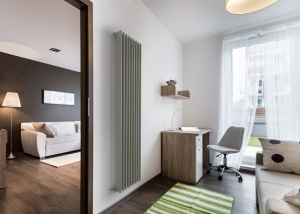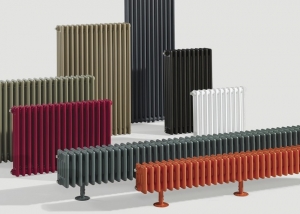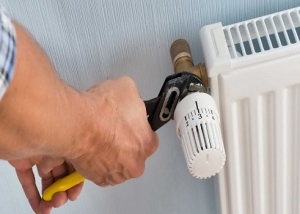The bracket for the heating radiator is a special fastener that is used to fix the thermal structure. Correct mounting of the holder determines the quality of the radiator. The general principle of fastening: special brackets are welded to the rear wall of the heat section, with which the heater is hung on the bracket.
Content
Factors Affecting Bracket Selection
It is most efficient to mount batteries near doors, windows, as the heat emanating from them prevents the penetration of cold air from the outside. When choosing a holder, pay attention to the alloy of which the bracket consists: it must be non-toxic and durable. In order for the fasteners not to rust, it must be galvanized. Additionally, the holder can be coated with a special coating that softens noise due to thermal expansion. Some brackets are also height adjustable. Choosing the right item depends on many factors.
Depending on the type of brackets, the fastener may have a different shape. There are two basic types of bracket based on the installation plane: wall and floor. Often, both of these types are sold complete with a radiator. The choice of fastener is affected by:
- material of the wall on which the radiator will be mounted;
- the size of the heating element and pipes;
- material of which the radiator is made;
- window sizes, their number and location;
- design features of the room.
To mount the batteries from are used:
- cast iron brackets;
- steel pin
- steel, adjustable horizontally and distance from the wall;
- plate type made of steel;
- angular, including reinforced construction.
For the choice of fasteners, the material of the surface on which the battery will be hung is of great importance. A pin bracket is suitable for brick or concrete walls. For a heater of 10 sections, two of these elements are sufficient. If there are more sections - you need to additionally purchase a floor stand.
For drywall and wooden walls and partitions, only the floor type of fastening is used. Such clamps are adjustable in height or are available without it.
You can mount such radiators on a brick or concrete wall using the pins on the dowels. Bimetal weighs a little, so this option is enough. If the wall is made of soft material (drywall, for example), then the radiator is fixed with floor mounts.
Floor mounts are used for:
- heavy heating structures as an auxiliary element;
- in the presence of walls made of soft material;
- where it is not possible to mount radiators to the wall. For example, with a panoramic window.
The floor mount is fixed or adjustable. Also on the market there are special, non-standard models with a width of 80-100 mm, with or without plastic overlays.
Steel panel radiators are mounted with special fasteners in the form of hooks.They "hold" the battery by the brackets located on the back side. This type of fastening is considered ideal, as fasteners are not visible.
Tubular models are suspended on two mounts in the upper corners and fixed with plastic clips in the lower.
It is worth considering that for a reliable fastening of the wall radiator, the wall must first be well aligned. The material from which the fasteners are made must match the alloy of the heating element. The average number of holders per standard radiator is three brackets: two upper and one lower supporting. An increase in the cast-iron battery by 5–7 sections and an aluminum by 7–10 requires an increase in the number of brackets by one upper and one lower, respectively.
Important! If the battery is installed near aerated concrete or drywall partitions, a panoramic window, then only floor brackets are used for installation.
Holder Mounting Rules
The ideal placement of the heater is considered to be in the center of the window opening. For efficient room heating, the holders are mounted at a certain distance:
- about 100-150 mm from the floor;
- 40-50 mm from the wall;
- not less than 90-120 mm to the windowsill.
For successful marking, it is necessary to determine the middle of the window opening and mark this place with a level. Further calculations depend on the wiring:
- in the case of the lower wiring, a horizontal line is marked parallel to the floor surface;
- with lateral connection, the calculation is based on the position of the upper supply pipe - the horizontal is marked parallel to the axis of the supply pipe.
The distance between the points of the holder is transferred to the marked horizontal lines, for greater accuracy, you can attach the bracket directly to the surface for installation. At the end of installation work, the reliability of the mounting system is checked by light pressure from top to bottom. There are three main types of radiator connection:
- lateral one-sided - the most common option. The inlet pipe is connected to the upper pipe, diverting, respectively, to the lower;
- lower. It is used if the heating system is hidden in the floor;
- diagonal. The best option for long radiators. The supply pipe is connected to the upper pipe on one side, and the discharge pipe is brought to the lower on the other side.
Types of brackets
Depending on the type of construction, pin or anchor brackets are used. The former are considered standard, are used to mount small heating sections. Standard installation procedure: the wall is drilled up to 12 cm deep, the dowel is driven into the hole, and the battery holder itself is screwed into it. Anchor holders are used for more massive structures.
Based on the type of battery, the following types of brackets are distinguished:
- holders for cast iron batteries;
- for steel heating chambers;
- for bimetallic and aluminum batteries.
Cast Iron Battery Fasteners
Holders for heavy cast iron batteries are also called reinforced, because they must cope with the load for a long time. Before buying, it is worth calculating the dimensions based on the parameters of the heating sections, and also take into account that the back wall of the device should be at a distance of 30 to 50 mm from the wall. The holders are also designed for standard heat exchangers in 6-7 sections.
Note! For greater durability, such batteries can be additionally mounted on curved pins.
Floor brackets for cast iron heating sections can be height-adjustable. This type of holder is used if the room has thin, weak walls. The standard holder format for a medium cast iron battery is a floor bracket of size 500x140.It is worth noting that when installing cast-iron heating sections, special mounting plates are also used for hanging radiators from cast iron, which have the form of a vertical plate with two pins that provide fastening of the upper and lower sections.
Brackets for steel radiator
Among steel heating elements, tubular and panel are distinguished. The rear wall of the panel sections is equipped with special brackets, for the successful hanging of hooks on the brackets extremely precise marking is necessary. Often, an easier way is used: the battery is mounted on the upper bracket and the lower stop. The lower part is fixed on the bracket, but not fixed on the wall, with its help the exact position of the heat exchanger is regulated. Pipes are additionally fixed using special clamps.
Important! When buying, it is better to give preference to sliding clamps, as They are suitable for pipes of any diameter.
The installation of tubular radiators is similar to the mounting of panel installations, only the upper hook is designed so that the upper manifold pipe is conveniently suspended. For light tubular heat exchangers (whose weight does not exceed 100 kg), wall-mounted trims are used, the radiator is additionally fixed with plastic grips. Such an arm is known as an SMB holder. Steel heat exchangers up to 10 sections in size can only be mounted using brackets. If the battery weighs too much, then in order to prevent tears in the lower part of the heating structure, it is necessary to arrange the holders in two rows.
Brackets for aluminum and bimetal heating sections
Holders for bimetallic and aluminum batteries are similar to fasteners for cast-iron sections, only they are usually thinner. They are mounted without additional supports. For such radiators, only hinged structures are used, but in a room with glass scenes where wall installation is not possible, special floor racks are used.
Especially effective are corner steel mounts. If the battery consists of 2-12 sections, then 3 holders will be needed to mount such a radiator, additional brackets are added one for every 4-5 sections. For lightweight radiators, it is convenient to use angle brackets. These holders are equipped with double-sided recesses and can be fixed on the left or right side of the heat exchanger.
Additional information regarding bracket selection
The average cost of parts depends on the alloy and the number of components:
- for panel radiators about 200 rubles;
- for floor mounting about 500 rubles;
- anchor holder (1 pc.) in the region of 60 rubles;
- bracket for mounting cast-iron radiators (1 pc.) about 30 rubles.
It is worthwhile to carefully approach the process of self-installing radiators, checking the position of the holders relative to the heating section, taking into account the particular layout of the room, the alloy of fasteners and the heater. However, improper installation of the equipment can lead to serious problems with the operation of the radiator, in addition, this design will be unsafe. Therefore, if possible, it is worth entrusting the installation to professionals. At the end of hanging, do not forget to evaluate the strength of the fastening and check the design for lack of backlash.
